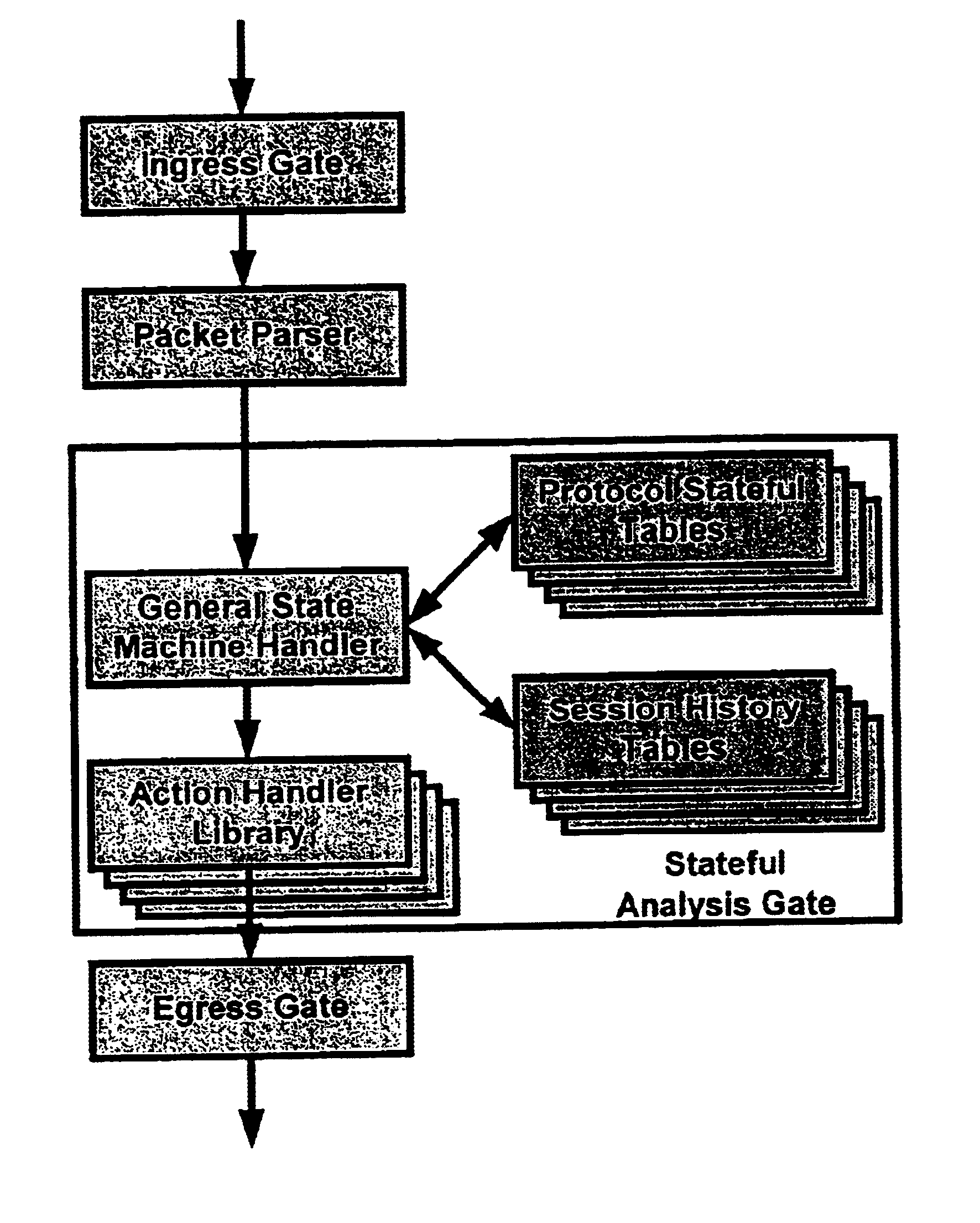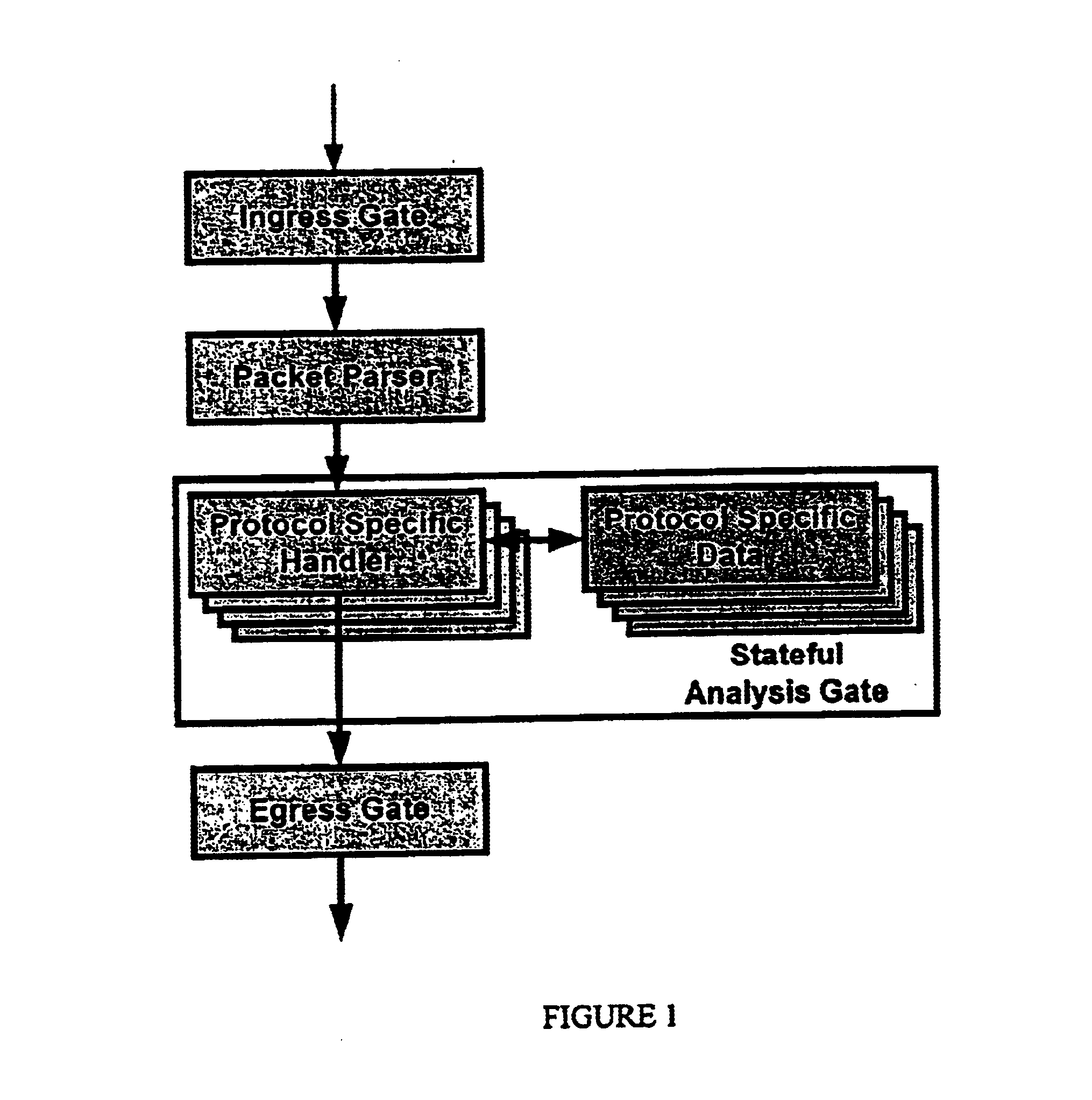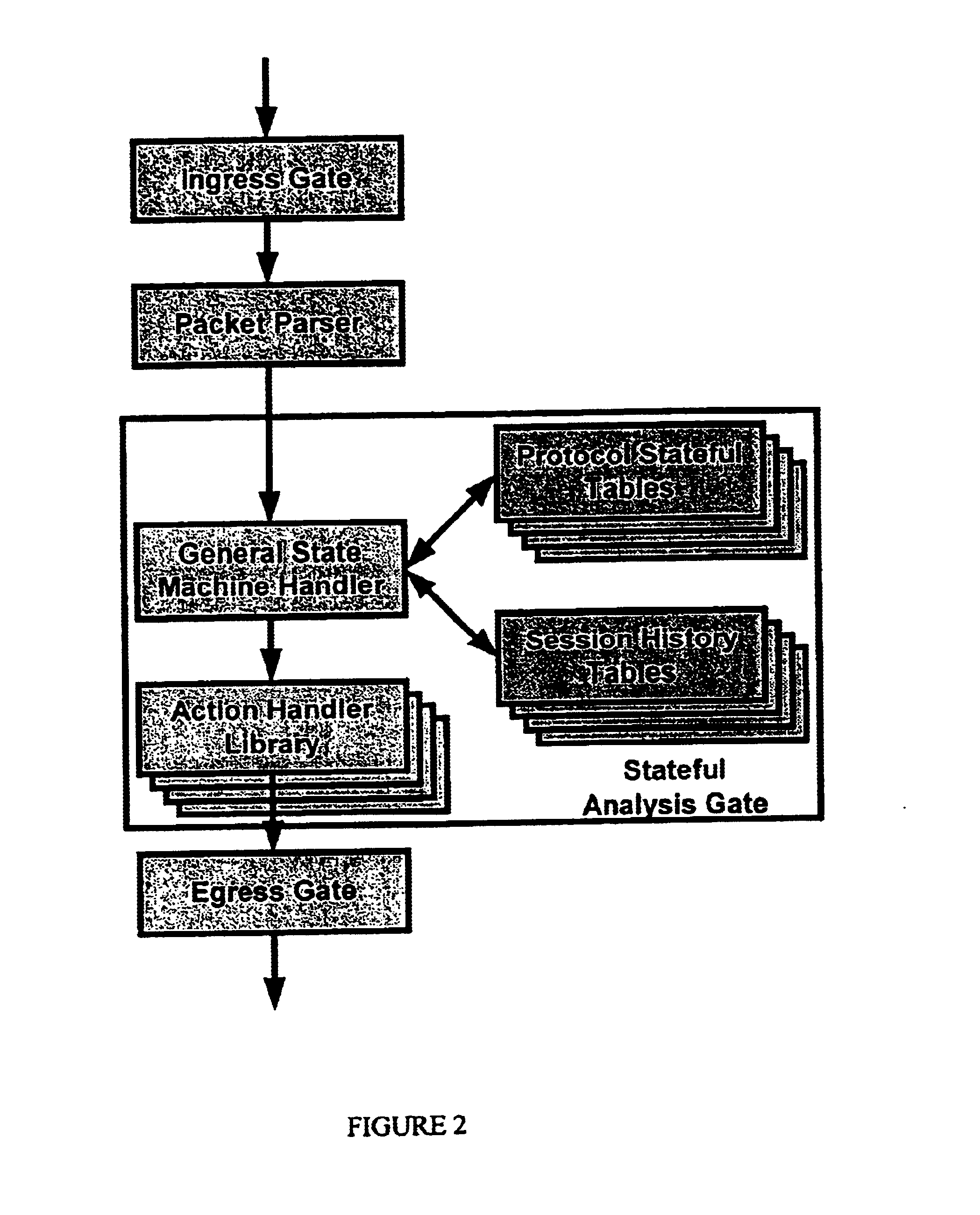There are no known current technologies on the market that enable a simple and cost effective means for narrowing of the gap between the multi-
Gigabit speeds of modern
data transmission and the multi-
Megabit speed of modem data processors, thereby allowing standard processors to process incoming data packets at wire-speed.
As a result, traditional multi-
protocol processing apparatus in unable to achieve processing speed of data packets that compares to the speed of the data packet transfers.
Consequently the substantial improvements in communications infrastructures go largely unfelt, as the data is still typically processed at slower speeds.
One drawback to the dramatic telecommunication advances is that the different protocols used are not naturally compatible with each other.
The
disadvantage is that too many processors are needed to fill the substantial processing gap (100-1000 times), and the load balancing requirements become increasingly complicated.
However, since the general Computer Stations s are relatively generic devices that are able to do multi-functions, they are generally considered to be too slow to be used for dedicated
network processing.
The
disadvantage of such technology is that the number of protocols is continually growing, and therefore ASICs are required to be updated in order to support any new protocols or any new features in existing protocols.
Since such adaptations require additional
programming, pure hardware implementation (ASIC) is impossible, or at least ineffective.
Some kind of CPU core for actions is required, and the use of several chips (
general purpose CPU+ASIC) poses serious synchronization problems.
A further problem with pure-
hardware implementations is that even though implementation of protocols, such as TCP / IP in ASIC can be executed, it is almost impossible to do it bug free, and bug fixing in ASIC is extremely difficult.
The '963 patent is about TCP / IP support in
silicone, and offers nothing for upper
layers' protocols acceleration.
However, there are various
software problems, associated with the NP.
Since NP's architecture is very different from that of conventional processors, conventional
programming methods do not allow for effective utilization of NP resources.
Such a
weakness typically prohibits NPs from effectively processing higher
layers protocols, which were traditionally typically processed by
software only.
Such an approach, however, has the following disadvantages: a larger quantity of
instruction memory is consumed;
parallel processing is limited because the instructions must be executed in order, one at a time (unless there are a plurality of CPU cores);
algorithm implementation effectiveness depends first and foremost on the
programmer's skills; and
hardware acceleration is almost impossible (except using more powerful processors) because no hardware can compensate for the lack of
programming skills.
However, for each additional protocol, the network device requires substantially more program memory resources in order to be processed.
These network processors are typically restricted to minimal processing memory and significant quantities of
data memory, in order to rapidly execute specific tasks.
The
disadvantage of this implementation, however, is that if processing of additional protocols is required, the
system requires a high processor overhead, a large amount of program memory is required.
In addition, the computer used to coordinate such processing of different
software protocols and data handlers demands a complicated configuration setup.
Furthermore, existing protocols are often changed or become obsolete, while new protocols are created nearly every day.
The number of protocols in use makes it difficult to maintain wire-speed high level (protocol specific) processing of communication traffic, because nearly all protocols may be implemented in general processor based,
low speed machines.
 Login to View More
Login to View More  Login to View More
Login to View More 


